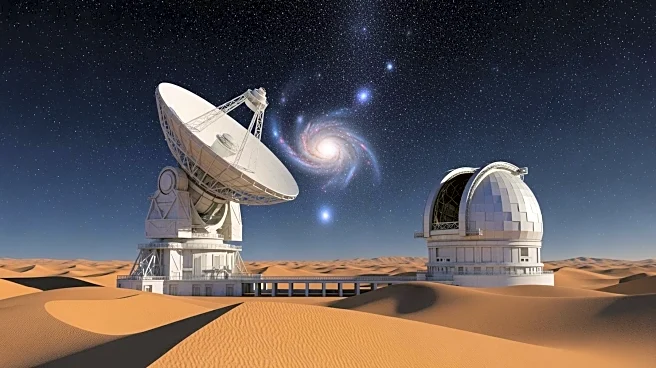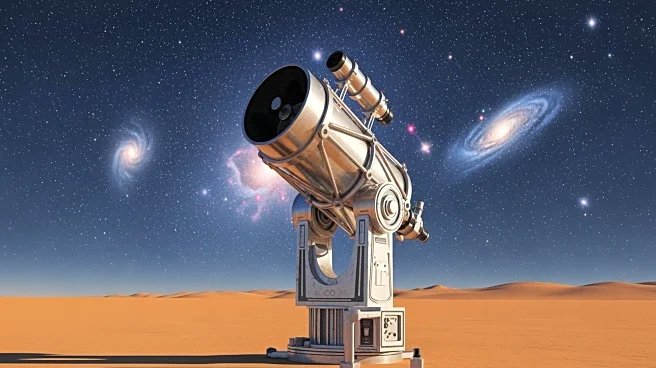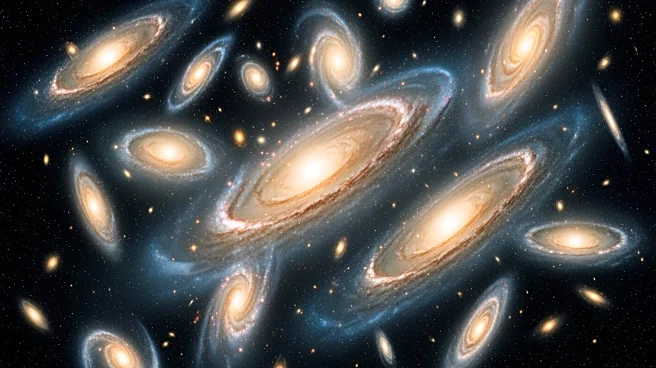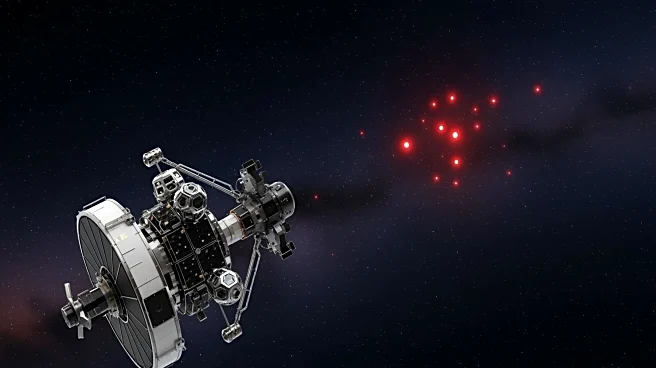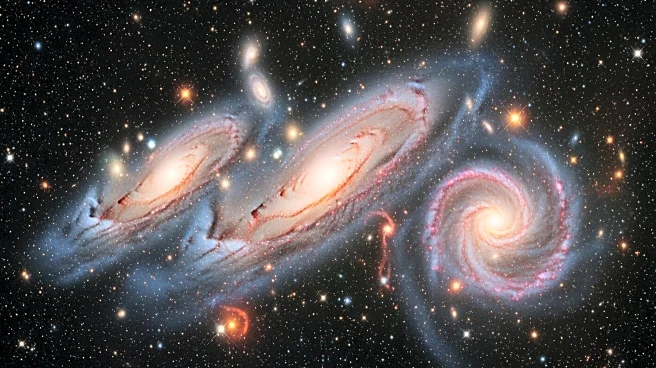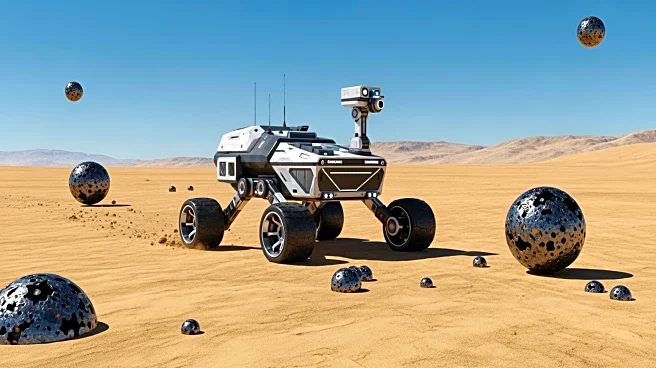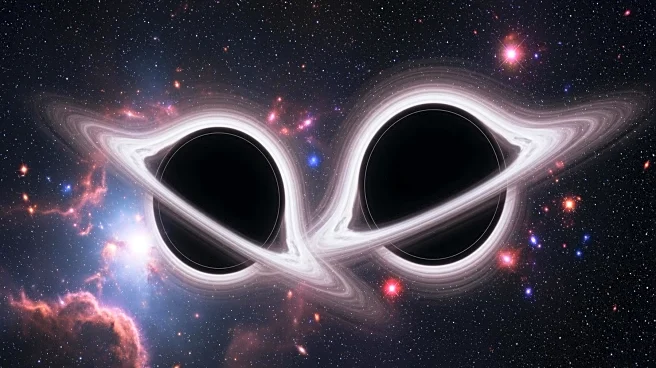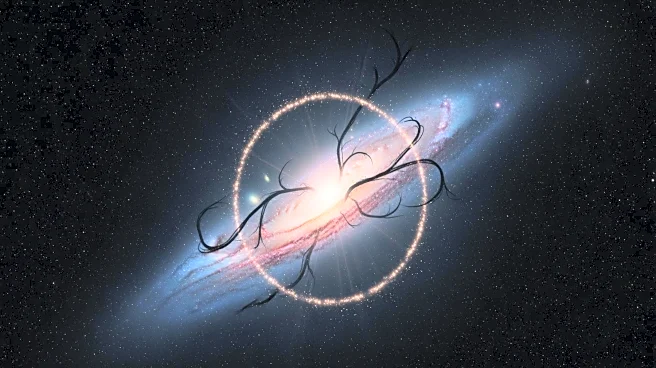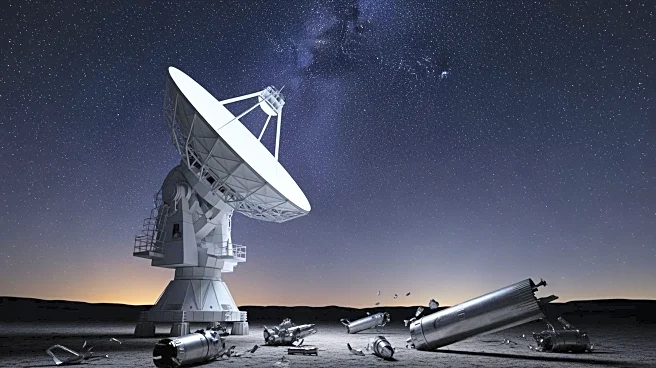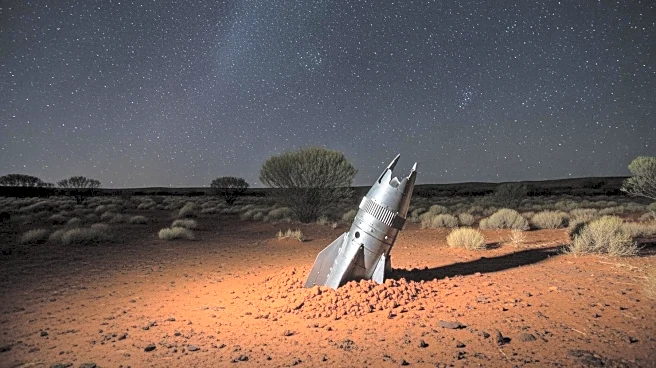What's Happening?
A study using data from the Murchison Widefield Array telescope in Western Australia has provided new insights into the universe's conditions during the 'epoch of reionization,' approximately one billion
years after the Big Bang. Researchers found that the universe did not experience a 'cold start' during reionization, as previously theorized. Instead, heating likely began around 800 million years after the Big Bang, possibly due to black holes and stellar remnants. This discovery challenges existing theories about the universe's early development and suggests that the gas between galaxies was heated by a certain amount, ruling out very cold reionization.
Why It's Important?
Understanding the conditions during the epoch of reionization is crucial for astrophysics, as it marks the transition from the 'cosmic dark ages' to a universe filled with stars and galaxies. The findings indicate that the universe's early heating was influenced by x-rays from black holes and stellar remnants, providing new insights into the processes that shaped the cosmos. This research contributes to the broader understanding of cosmic evolution and the factors that led to the formation of the universe as we know it today.
What's Next?
Researchers will continue to analyze data from the Murchison Widefield Array and other telescopes to further investigate the heating mechanisms during the epoch of reionization. The study's findings may prompt new theories about the universe's early development and the role of black holes and stellar remnants in cosmic evolution. Future research will focus on isolating signals from the epoch of reionization and improving data quality to uncover more details about this critical period in the universe's history.
Beyond the Headlines
The study highlights the importance of international collaboration in astrophysics, as researchers from various institutions contributed to the findings. The use of advanced telescopes and data analysis techniques demonstrates the potential for new discoveries in understanding the universe's early development. The research also underscores the challenges of studying cosmic phenomena from billions of years ago, requiring innovative approaches to overcome observational limitations.
